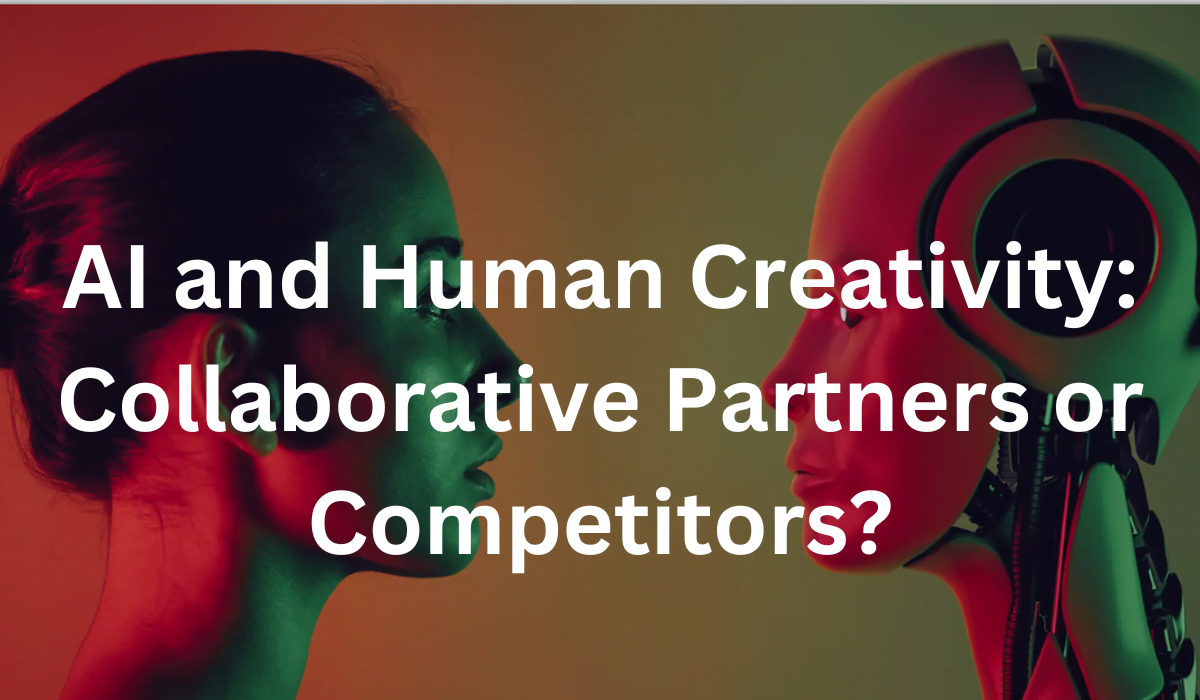So far, humans have been the universe’s most amazing creation. But during the last decade, we saw a fascinating revolution: artificial intelligence’s evolution. It is, without a doubt, one of the most astounding inventions of the human imagination. As time passed, humans kept increasing the efficiency and programming of artificial intelligence methods, perplexing them about their ability and potential. However, as these artificial intelligence techniques became common, it confused everyone about whether it is competing with the human mind or helping it in many ways. We found some really very interesting information in the struggle to find the answers to AI and human creativity. Read about them below:
The Capabilities Of AI
AI can be defined as a computer acting or making decisions that appear intelligent. AI imitates how people act, feel, speak, and make decisions in accordance with Alan Turing’s philosophy. This intelligence is beneficial in an organizational setting since it may find informational patterns that maximize job-related trends because of its capacity for imitation. Additionally, unlike humans, AI never gets physically exhausted and will continue functioning as long as it is fed data. These unique points make AI the best candidate for repeated, low-level and regular operations within closed management systems. The game’s rules are crystal clear and unaffected by outside forces in such a system. Consider an assembly line where workers are not distracted by requests from other sources, such as meetings at the office. As an illustration, consider the assembly line, where Amazon put algorithms in charge of managing human employees and even firing them. AI can conduct tasks more accurately than human supervisors because they are repetitious and subject to strict rules that maximize production.
Let us Talk About The Extent of Human Capability
However, human capabilities are more varied. Humans have the capacity to envision, anticipate, feel, and judge changing conditions, which enables people to transition from short-term to long-term concerns, in contrast to AI abilities that are simply responsive to the facts provided. These skills are specific to humans and unlike artificial intelligence, which depends on a constant stream of data from outside the body to function.
In this perspective, people constitute a different kind of AI, or what we would term natural intelligence. When open systems are in existence, this kind of intelligence is required. In an open management system, the team or organization interacts with the outside world and must thus control external influences. In such a context, it is necessary to be creative in distilling a vision and future plan while also being able to foresee and deal with things like rapid shifts and skewed information exchange. Open systems are continuously changing, and natural intelligence is required to handle this process effectively.
Artificial Intelligence Lags In Creativity
Today, we have this most important debate about AI and human creativity: whether artificial intelligence is surpassing human creativity. Well, the answer is a plain No! Though artificial intelligence can give many creative solutions, ideas, and answers, it still works on a specific pattern and provides data according to the data makers have fed into it. It does not hold the capability to think or consider anything beyond it. But the human mind is fabulous! It can think and be as creative as possible, bringing in new ideas with surprising creativity. However, humans can use artificial intelligence to get cues to be their creative best. For example, an artist or poet can use AI to get some inspiration for the next theme of work and then create something fascinating with that idea.
AI Leveraging Human Creativity
Many experts support a more collaborative approach to AI and human creativity, in which AI and human invention complement one another rather than being viewed as a threat. AI can empower creators and artists by providing new options and enhancing their creative processes. Here are some instances of how AI and human creativity may coexist:
- AI helps artists by generating new ideas, revising initial draughts, or automating time-consuming tasks, enabling them to focus on the heart of their creative vision.
- Artificial intelligence-generated literature, music, and art may inspire human artists and push the boundaries of artistic expression.
- Artificial intelligence (AI) can tailor music, narrative, and visual art to the preferences of various audiences.
- AI and other cross-disciplinary advances can enable technology and creative teams to collaborate to establish unique projects that mix artistic expression with cutting-edge AI technologies.
- Augmented reality experiences powered by artificial intelligence may blend the real and virtual worlds, opening new avenues for creative expression and immersive storytelling.
Will AI eventually replace people?
Despite the possibility of automating some chores and vocations, Some jobs are expected to be displaced by AI. AI excels at repetitive, data-driven activities and generating data-driven conclusions. However, AI must better mimic human qualities such as creativity, critical thinking, emotional intelligence, and sophisticated problem-solving.
AI will increasingly be utilized with humans, improving human skills and allowing people to focus on more complicated professions that require human ingenuity and understanding. It is critical to see AI as a tool for increasing efficiency and creating new opportunities rather than as a full-fledged replacement for human engagement.
The fear that artificial intelligence would displace human jobs is common. That has only become worse recently, with the recent integration of Chat GPT into the Microsoft system and awareness of the coming version that Google is now working on.
The truth in the context of AI and human creativity is that AI won’t completely replace human labor. AI will lead to the creation of new employment while potentially making some obsolete. In addition, many occupations will still need empathy, creativity, and human contribution. AI is a tool that should be used to improve human skills, not to replace humans. Businesses that encourage human-AI collaboration will be better equipped to cut costs, make better decisions, and maintain competitiveness in a changing market.
However, existing AI is a fantastic tool that may be utilized to improve human capabilities; it is not yet ready to completely replace people. Humans are still required for empathy, creativity, and fabulous decision-making power. AI can support human decision-making by offering data-driven insights but cannot replace human judgment.
Also Read:

